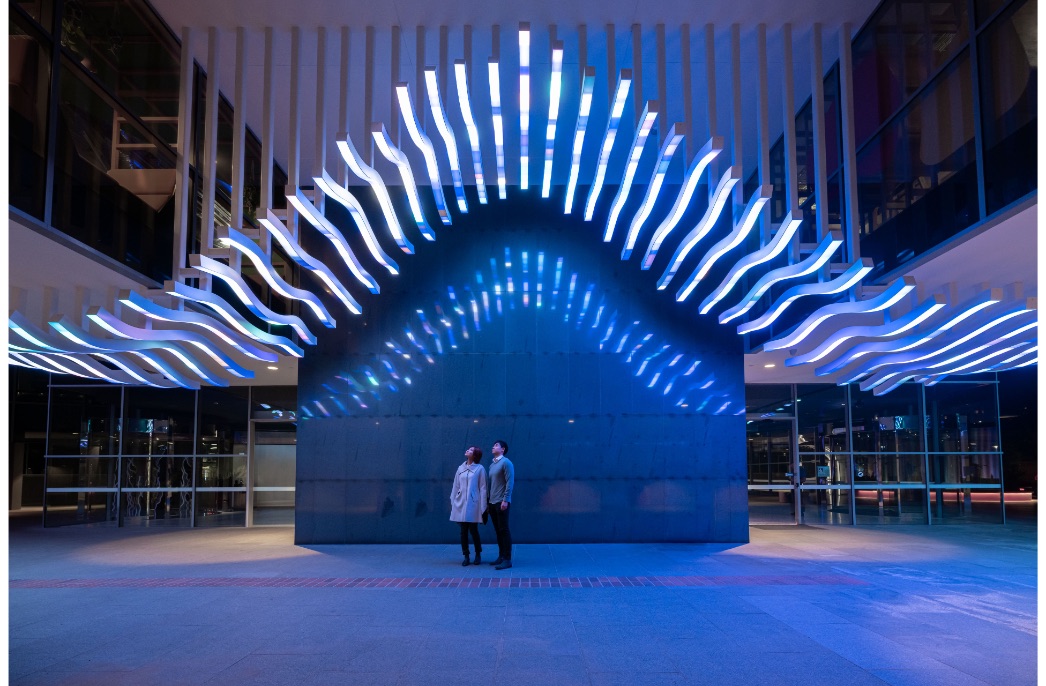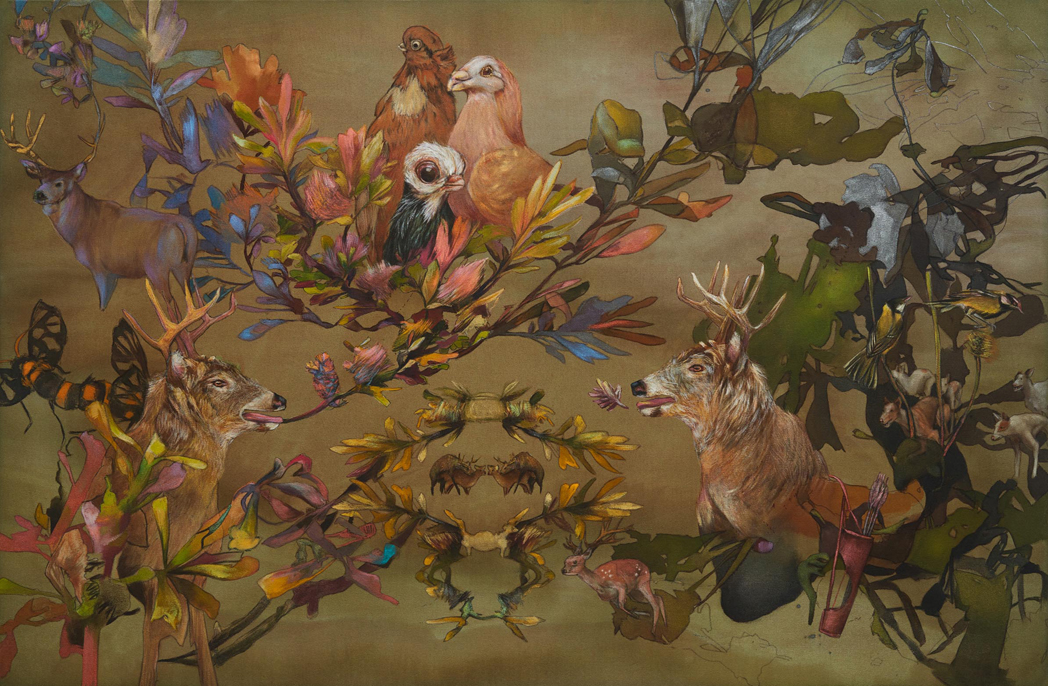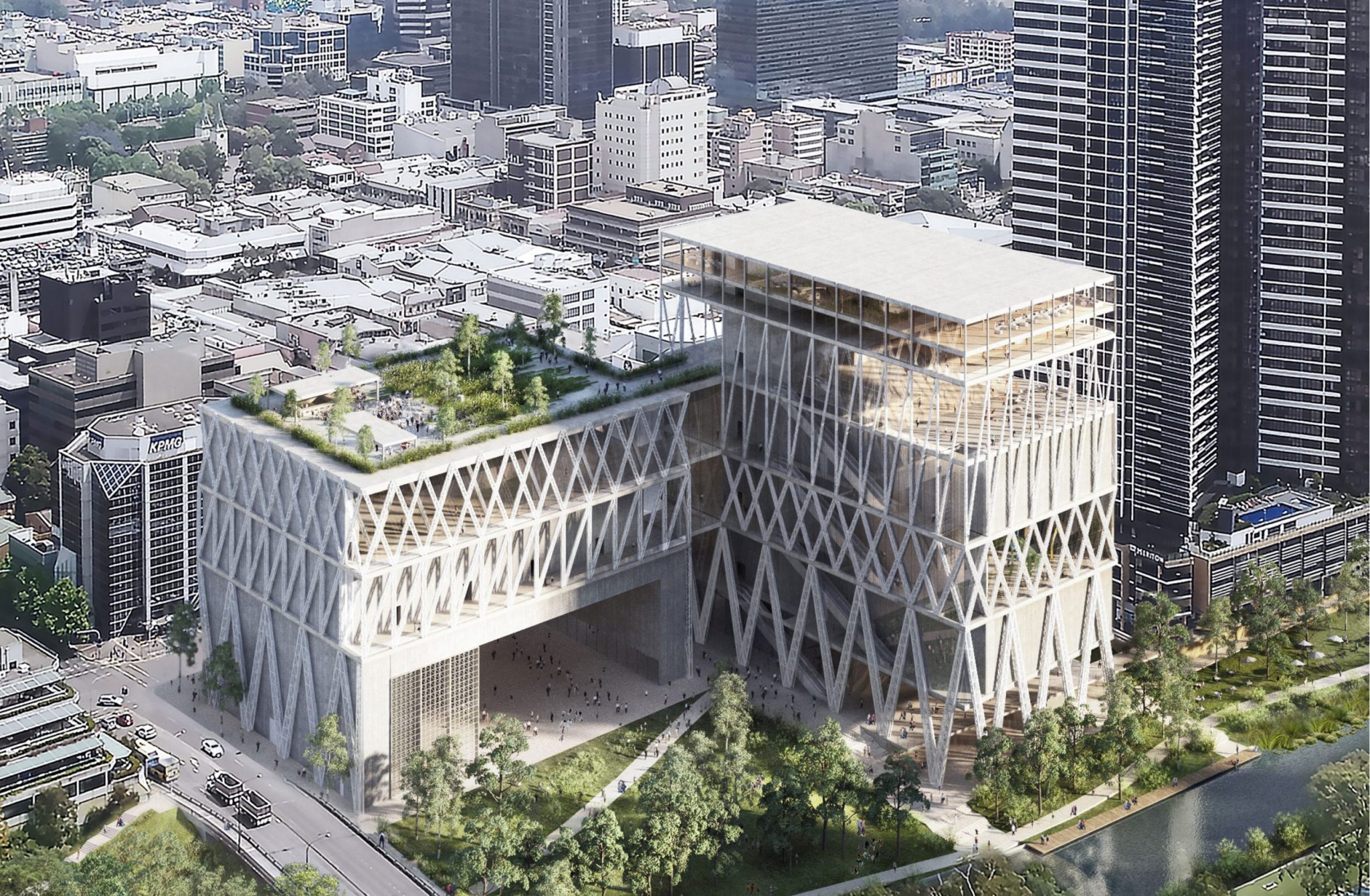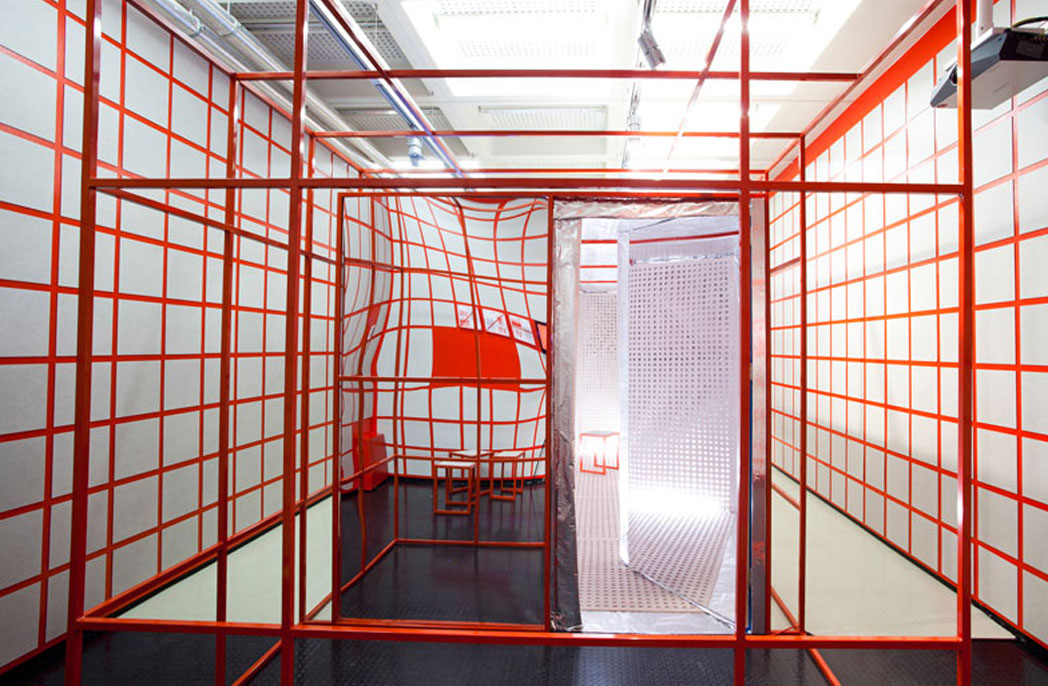
Q&ADR: Alex Sanson, kinetic sculptor
Share
Every week in our Q&ADR column, ADR interviews an architect, designer, object maker or industry person about who they are beyond the work – their life, inspiration, challenges and aspirations.
This week we meet Alex Sanson – a kinetic sculptor. Sanson designs and builds mesmerising works that are often interactive and activated by touch, and much larger installation art and large scale sculpture for outdoor arts and music festivals.
You make kinetic sculptures. Could you tell us a bit about them and how they work?
My outdoor sculptures are often large in scale to fit in with the environment – think medium sized tree in scale – and have a multitude of similar elements that move in relationship to each with a rhythmic motion. I try to build pattern and form as layers of elements that move in and out of phase with each other and I’m often trying to create a hypnotic or euphoric experience. Typically they have a central integrated steel truss tower with a small electric motor driving multiple gearboxes and then a partially exposed drive chain. While effective in the daytime, they are really designed to come alive at night as lighting picks out and highlights key details.
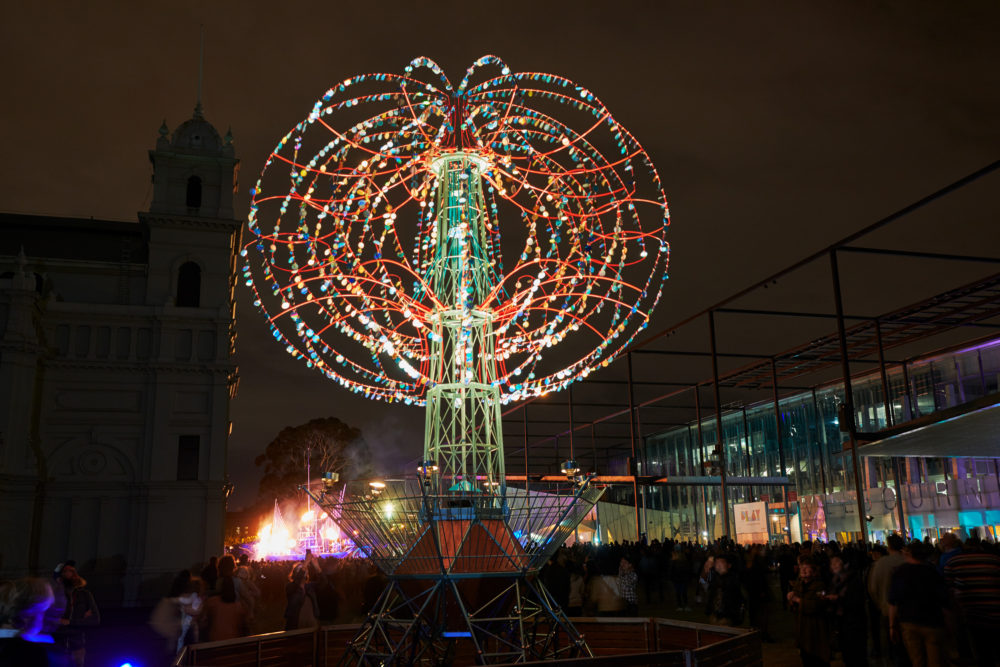
Nebulous by Alex Sanson at White Night Melbourne 2017. Photo by
How did you get into making them?
I’ve been making sculpture in some fashion for most of my life, starting off with small toy like pieces. But in the early 2000s, I started making works for outdoor arts and especially music festivals. There is so much creative freedom in these sorts of settings and the potential to create installations that become part of a space where people are experiencing my sculpture alongside a broader cultural event. And over the years, I’ve been more and more drawn to sculpture that moves, it brings it to life, deepens the experience and engages more readily with a wider audience. So kinetic sculpture now is the focus of my practice, including the big outdoor pieces as well as indoor interactive ones which add another level of engagement.
Where do you find inspiration for your works?
Alexander Calder was a very early childhood inspiration with his stunning mobiles, similarly with multiple elements moving in relationship to each other. But at the moment, I’m loving the movements of masses of creatures, a murmuration of starlings, schools of fish, sped up images of massed crowds crossing roads, people negotiating a (mostly) flawless passage between each other. Nature and science are endlessly interesting, as well as things like the latest visualisation from CERN or the drawings of microscopic life by Ernst Haeckel, or just the way different leaves deflect to shed wind-load.
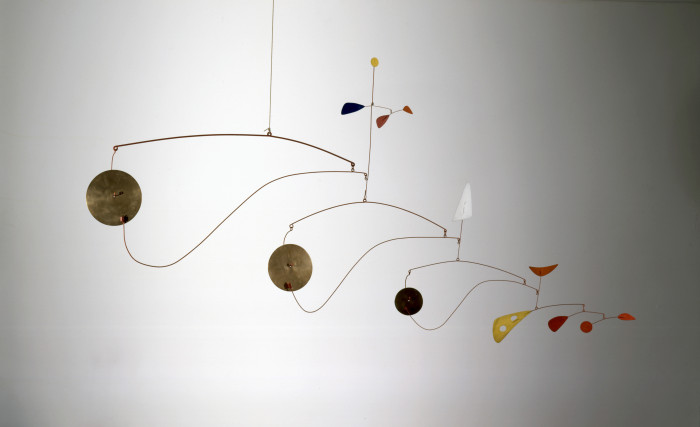
Triple Gong by Alexander Calder. Photo courtesy artnews.com/Calder Foundation/Artists Rights Society.
Every artist puts a part of themselves into their work. Which piece resonates with you the most and why?
One of my favourites is an indoor piece, Giddy Pirouette, inspired by the pre-renaissance ideas of the movement of celestial bodies. In this, the Earth is still mapped as the centre of the universe with the strange eccentric orbits illustrated in beautiful orreries of the time. But if you could map the movements of a dancer about a stage, the patterns seem to have a similar resonance. So in Giddy Pirouette, it has many similar stacked elements that spin and transfer energy to each other in a way sometimes predictable, sometimes not, and it does seem, I hope, to capture a sense of a dancer, but also some of the almost-magical traces of the planets through our skies.
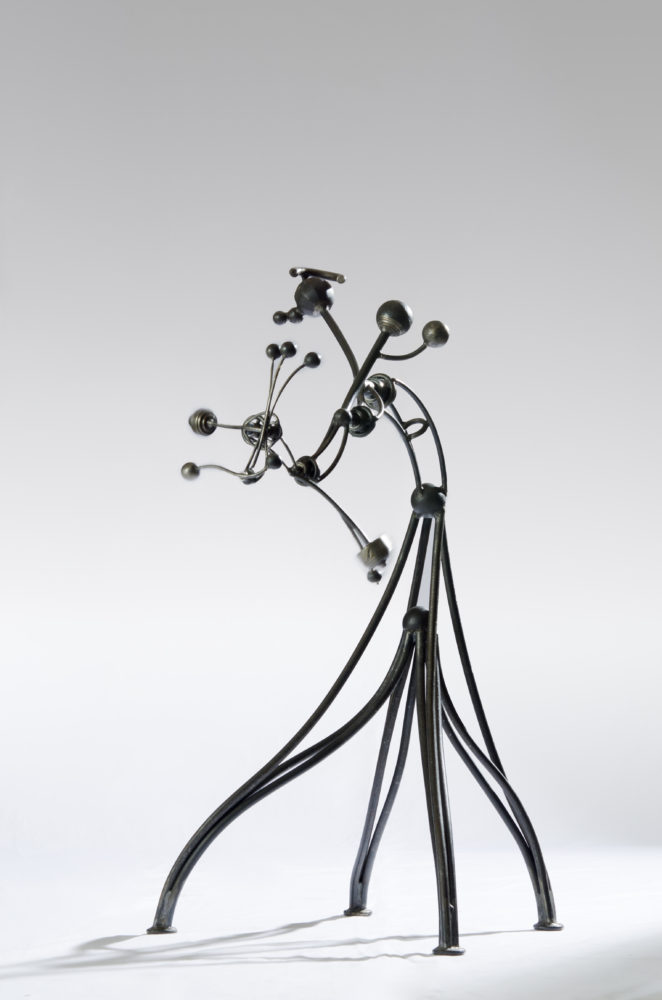
Giddy Pirouette by Alex Sanson. Photo by James McArdle.
How long does it take to make each piece?
It’s always so hard to pin this down as most of the big works are an evolution from previous ones and carry forward some of the technical design detail, as well as some of the actual drive chain parts, but typically a month to design and a few months to build, test and install.
To make the sculptures, you do fabrication, machining, welding, blacksmithing and woodworking. How did you learn all these skills? Did they develop over time?
A lot of it started with childhood tinkering and then I was mostly self-taught as an adult but also took various technical and arts courses to professionalise some of the skills. Working with or for other people at times were great learning experiences, especially at an artistic metalwork company in London where I worked for a few years. While not an actual apprenticeship, that position had much the same impact and gave a very solid basis to many of my work practices.
What are the biggest challenges and rewards in making these sculptures?
When installing works at short duration festivals and events, they need to work perfectly every time, there is no second chance to get it right. So making what are, in effect, one off, very complex machines with hundreds of moving parts that move effortlessly and flawlessly without compromising any of the artistic vision is always a big challenge. But the joy of these festivals and events is that I get to place my artwork in front of thousands or sometimes hundreds of thousands of people. And I think attendees at these events are not out to be critical as perhaps in a gallery, but to experience some joy and wonderment and if I can provide some of that, that is a great feeling.
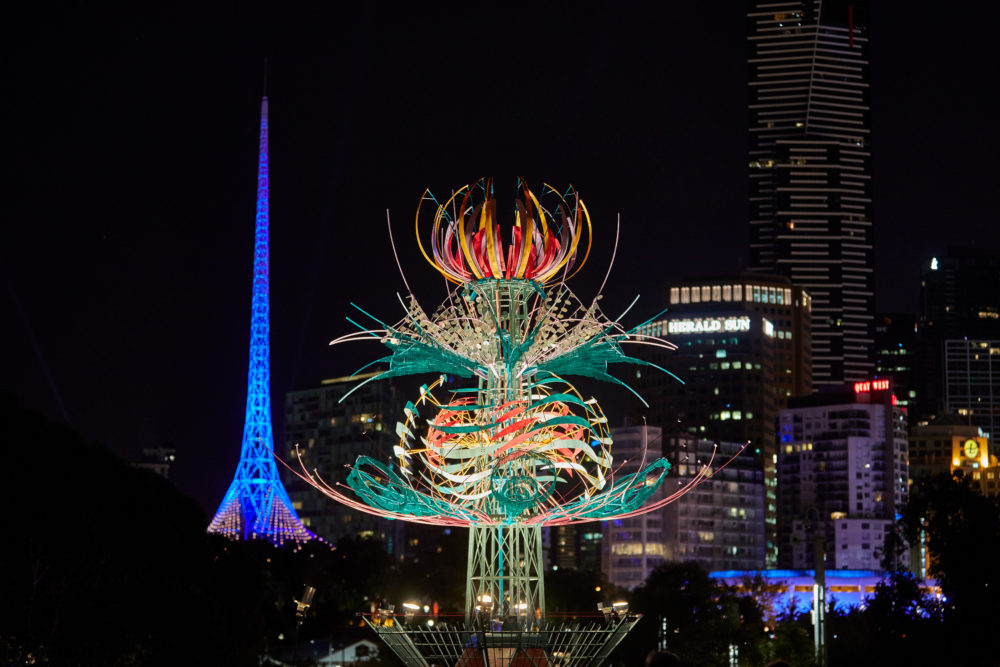
Spherophyte by Alex Sanson at White Night Melbourne 2017. Photo by Lorena Carrington.
Tell us about the (lack of) environmental impact of your works.
Well firstly, I seek to create a small number of high-value objects with long life spans to get the most out of resources consumed as possible. I re-use and re-create old works as much as possible, send almost nothing to land-fill and my workshop is 100 percent solar-powered (grid connected, averaged over a year). But I am conscious that my main medium is steel which has a high carbon footprint so I am always on the lookout for ways to reduce or offset this.
In the future, I expect to significantly augment the solar system which will go a long way to off-setting the non-electricity part of my footprint.
What are you currently working on/what is coming up for you this year?
I’m currently working on the concept designs for a much larger sculpture initially inspired by the origami-like foldings of a paper crane although it seems to be morphing into something else again. I’m looking to find a way to get it built and into the public eye later this year or early next year.
If you’d like to be featured in Q&ADR, simply email adrteam@niche.com.au with a little introduction of yourself.
You Might also Like
